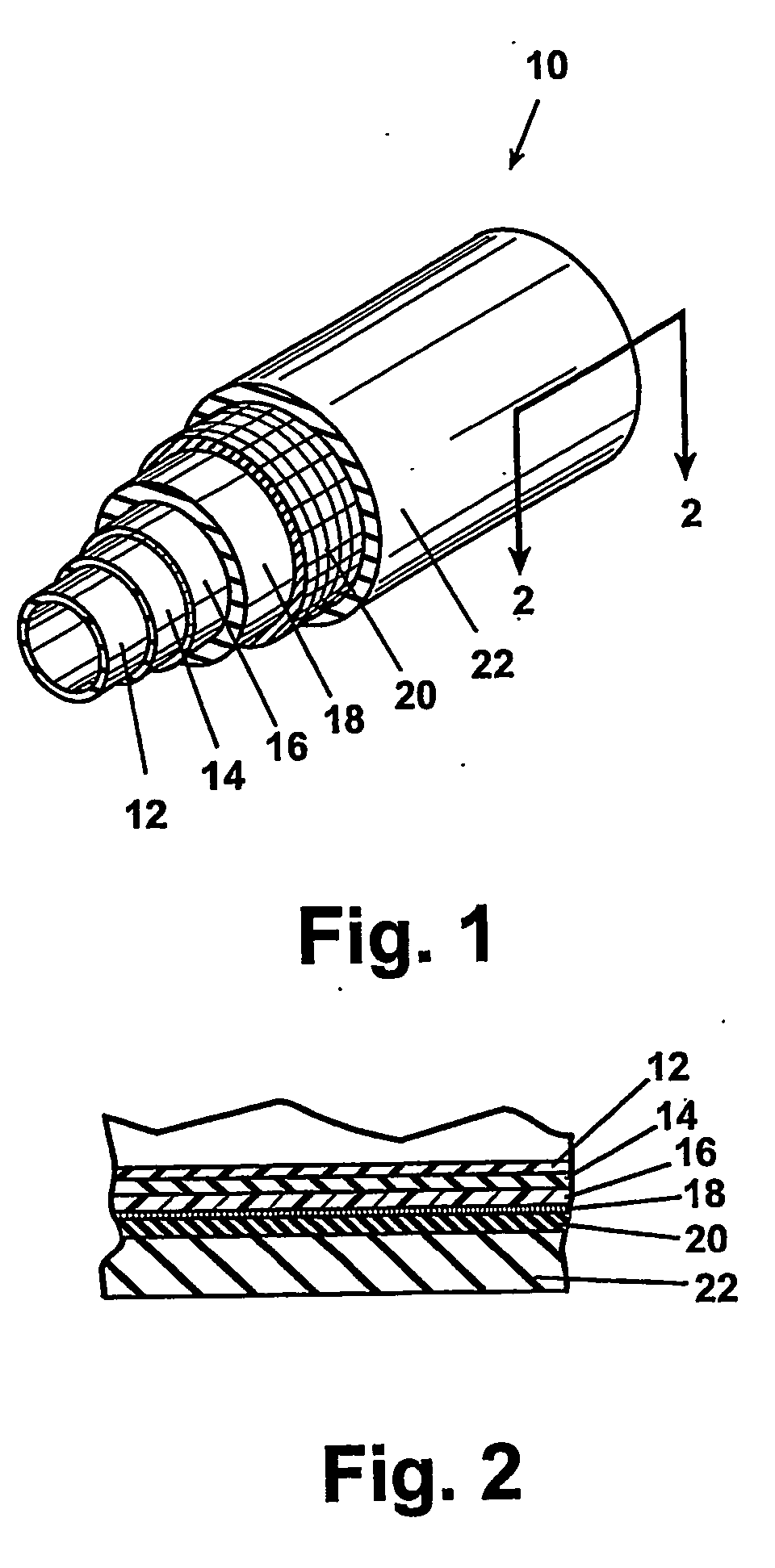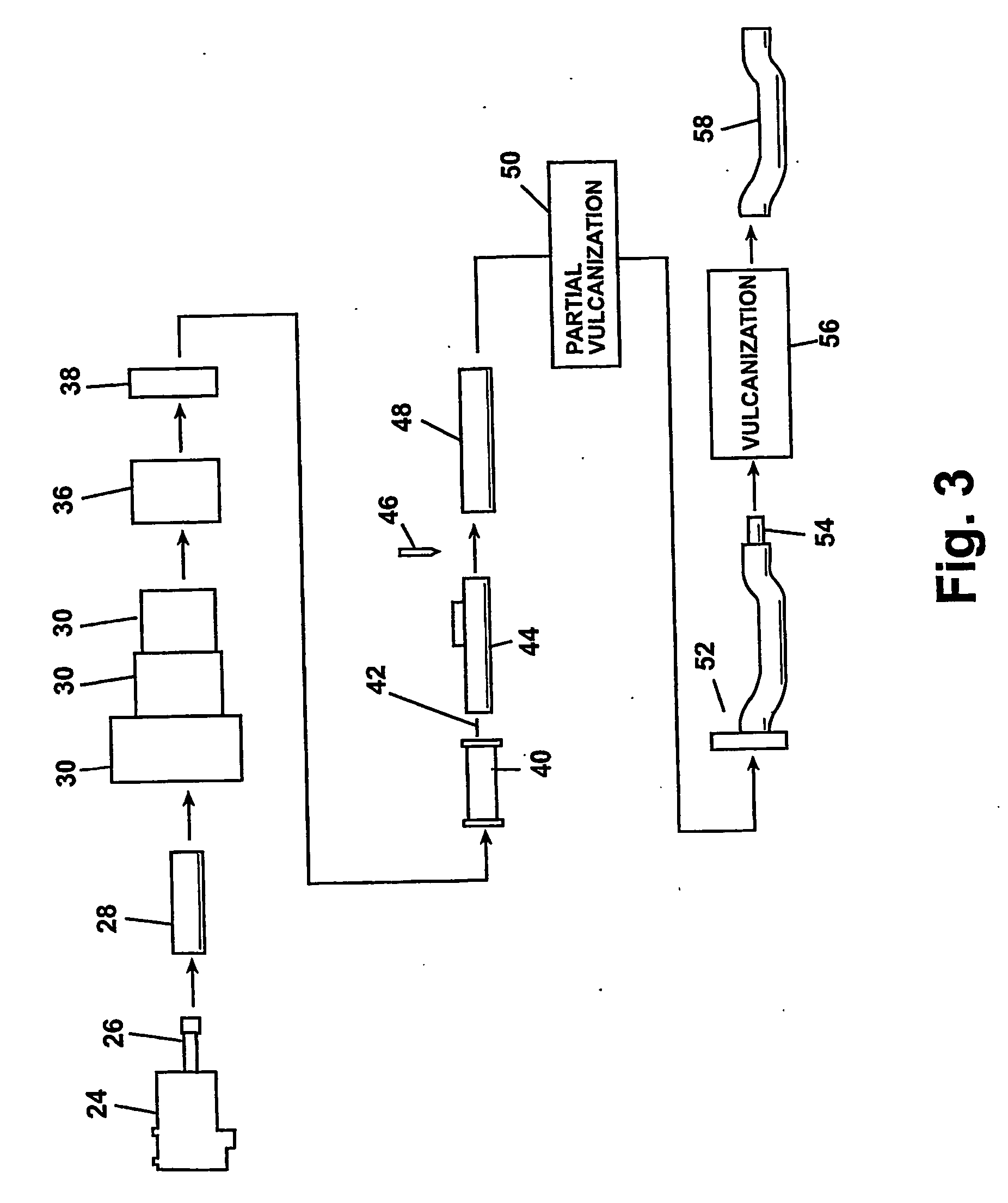Fuel filler hose
a technology of elastomeric tubes and hoses, which is applied in the direction of synthetic resin layered products, mechanical instruments, other domestic articles, etc., can solve the problems of affecting the life of fuel hoses, fkm layers are not by themselves sufficiently impermeable to hydrocarbon vapors, and fkm layers are difficult to bond to other rubbers. , to achieve the effect of increasing the impermeability of the tubular articl
- Summary
- Abstract
- Description
- Claims
- Application Information
AI Technical Summary
Benefits of technology
Problems solved by technology
Method used
Image
Examples
Embodiment Construction
[0040] Referring now to the drawings, and to FIGS. 1 and 2 in particular, there is shown a flexible tubular article 10 for transporting volatile hydrocarbons according to the invention. Preferably, the article 10 is used as an automotive fuel filler tube for gasoline and has a high degree of permeability. The article 10 has inner layer 12 of an FKM fluoropolymer, an intermediate layer 16 of a 800 grade THV fluoropolymer, a binder layer 14 between the inner layer 12 and the intermediate layer 16 to bind the two layers together, a relatively thick layer 22 of a tough, durable elastomer and a thin binder layer 18 between the THV layer 16 and the elastomer layer 22 to bind these layers together. An optional reinforcing layer 20 can be placed between the binder layer 18 and the elastomer layer 22. The binder layer 14 is preferably one or more thin layers of a THV flouropolymer of lower grade than the intermediate layer 16. For example, the binder layer 14 can be a 500G THV or a combinati...
PUM
| Property | Measurement | Unit |
|---|---|---|
| thickness | aaaaa | aaaaa |
| thickness | aaaaa | aaaaa |
| thickness | aaaaa | aaaaa |
Abstract
Description
Claims
Application Information
 Login to View More
Login to View More - R&D
- Intellectual Property
- Life Sciences
- Materials
- Tech Scout
- Unparalleled Data Quality
- Higher Quality Content
- 60% Fewer Hallucinations
Browse by: Latest US Patents, China's latest patents, Technical Efficacy Thesaurus, Application Domain, Technology Topic, Popular Technical Reports.
© 2025 PatSnap. All rights reserved.Legal|Privacy policy|Modern Slavery Act Transparency Statement|Sitemap|About US| Contact US: help@patsnap.com



